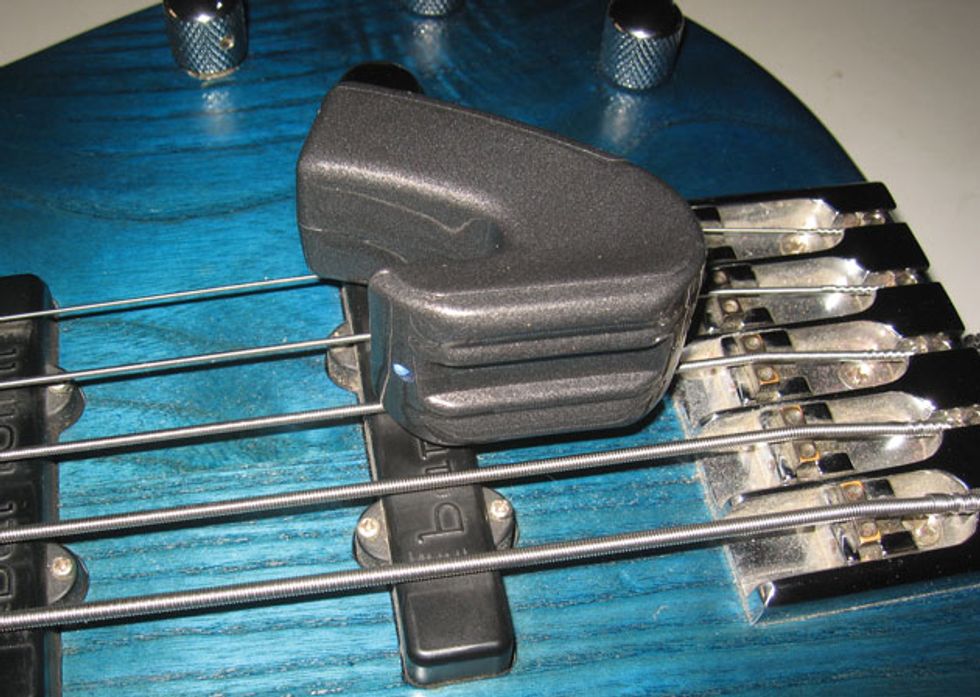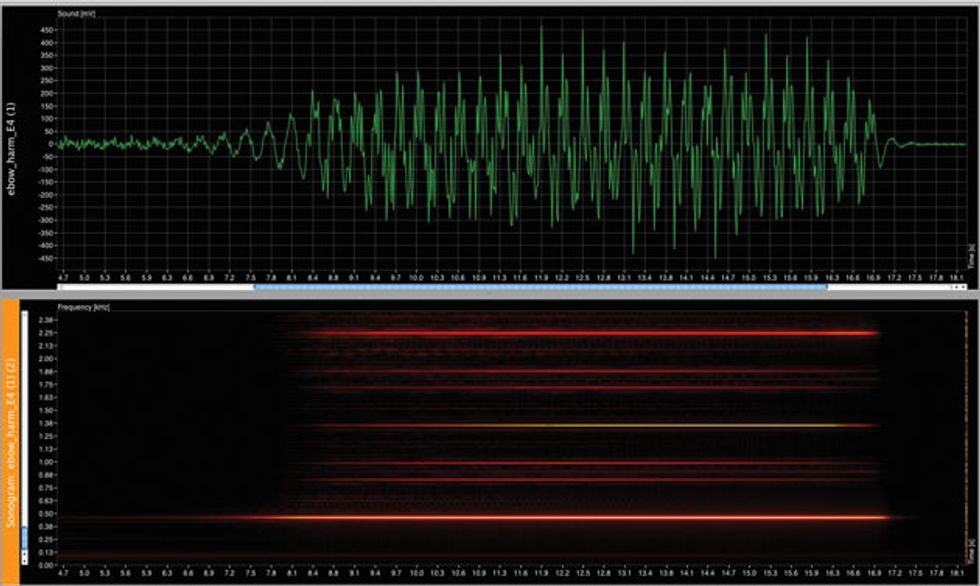In search of infinite sustain? Consider exploring the EBow.
Photo 1. Photo courtesy of basslab.de.
When the electric bass dethroned the upright bass as king of the low end, it also ousted the classical bow. This happened because the electric’s body shape, larger-radius fretboard, and strapped-on playing position made it hard or even impossible to seriously use a bow to excite the strings. Fortunately, we don’t have to completely forgo the bow’s singing tone because at least some of its attributes live on with its electric successor, the EBow (Photo 1).
The small, hand-held device was invented by Greg Heet in 1969, but not marketed until some seven years later. The battery-powered tool was initially aimed at guitarists and designed to produce a sustaining note or droning tone without actually touching the string. Its flute-like tones—which can easily be mistaken for a synth—often go unnoticed in a mix, which may explain why the EBow remains a niche product. But this little device has an impressive list of users and has appeared on epic hits.
How it works. There are many differences between the EBow and its ancient predecessor. The classic bow slides over the string, gripping it and pulling it to one side or the other until the tension gets too high and the string snaps back into its normal position. This results in an essentially triangular waveform.
By contrast, the EBow creates a continuous magnetic feedback loop on an underlying string. The EBow’s fundamental parts are an input or pickup coil, an amplifier, and an output coil that magnetically stimulates the string. The resulting sinusoidal waveform is then sensed by the instrument’s pickups. The EBow works with any steel string, but because it’s easier to magnetically excite lighter strings, the device is more popular with guitarists than bassists.
The Fernandes Sustainer and Moog Guitar are other guitar-only devices that use similar principles at different technical levels. While the former two are polyphonic, the EBow is strictly monophonic—it only works on one string at a time.
The EBow’s design hasn’t changed much since it came out, the only addition being the “harmonic mode” on the EBow Plus, which triggers higher harmonics. The sonogram—the plot of the intensity of frequencies over time—in Photo 2 shows the rise of upper harmonics as they turn from red to yellow over time. To hear the audio I used to generate this image, read the online version of this column at premierguitar.com. Click on “E4 harmonic with EBow” to hear the audio I used to generate this image.
Photo 2. Photo courtesy of basslab.de.
Using an EBow. The magnetic forces at work here are highly dependant on distance. So while the EBow is an incredibly versatile tool, it can be extremely sensitive. Thus the line between utter frustration and creative joy is rather small. The manual lists several ways to hold the EBow to generate a specific tone or effect, but at first you’ll be glad if it does anything at all. The EBow’s body has two grooves that allow the adjacent strings to act as rails to support the EBow at the correct distance from the string. This seems like it should work without any problems, but often that’s not the case.
In addition to having a high sensitivity for proper distance, the EBow presents two other crucial considerations: position and nodes. As I described in my April 2015 column “Shaping Your Tones by Hand,” a string’s reaction to magnetic forces depends on whether it’s attacked above a nodal point, or the bulge of the fundamental, or one of its harmonics. Just like it gets harder to pluck a string as you move closer to the bridge, such movement also change tone and reduce the EBow’s effect on the string. And while the EBow works quickly to excite light-gauge guitar strings, moving from one fret to another on a bass can result in silence. If you want to play lines, it’s a safer bet to slide between notes on a fretless.
If you plan to get an EBow, also budget time to get used to it. Even such an experienced and long-time user as Porcupine Tree’s bassist Colin Edwin has his surprising moments of total silence onstage. “I’ve found the EBow to be really useful for making textural, atmospheric, and drone sounds, especially with a fretless,” he says. “My usual preference is to use a touch of modulation with just enough delay to fill gaps between notes. Because the EBow can sustain a note indefinitely, you can use it to unobtrusively enhance quieter moments where the attack of plucked notes might be too much. It’s also useful for playing melodies, especially with some added distortion for a more upfront sound. Aligning the EBow against the string can be a challenge, however, as positioning is super critical. More than once I’ve found myself standing onstage in silence, minutely adjusting my hand position in an effort to make a sound.”


